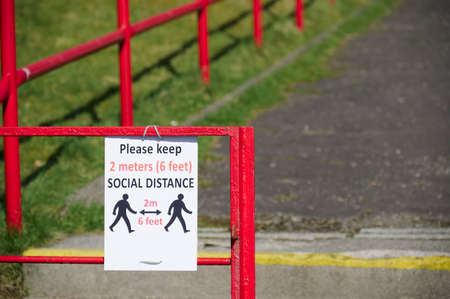Introduction to British Traffic Signs
Navigating the roads in Britain requires more than just driving skills; it demands a comprehensive understanding of the country’s unique traffic signs. These signs serve as a universal language on the road, offering guidance, warnings, and instructions that are essential for ensuring both safety and legal compliance. Whether you’re commuting to work, embarking on a weekend getaway, or simply running errands around town, being able to interpret these signs correctly is crucial for making informed decisions behind the wheel. Not only do they help prevent accidents and reduce confusion, but they also play a vital role in maintaining the smooth flow of traffic across motorways, A-roads, and city streets throughout the UK. Understanding British traffic signs is therefore fundamental for all drivers—locals and newcomers alike—to enjoy safer journeys and avoid costly penalties.
2. Shapes and What They Signify
Understanding the shapes of British road signs is crucial for safe driving and effective navigation across the UK. Each shape carries a specific meaning, allowing drivers to quickly interpret information and react accordingly, even at a glance. Let’s explore the main geometric forms you’ll encounter on British roads and what they signify:
| Shape | Example | Meaning |
|---|---|---|
| Circular | Speed limit signs, No entry | These indicate orders. Red circles prohibit (e.g., no U-turn), while blue circles provide mandatory instructions (e.g., turn left). |
| Triangular | Give way, Children crossing | Triangles are always warnings. Point upwards for general warnings (e.g., sharp bend ahead); point downwards for give way situations. |
| Rectangular | Direction signs, Information boards | Rectangles give information or directions. Blue rectangles are motorway instructions; green ones are primary routes; white rectangles provide local directions. |
The Importance of Shape Recognition
By paying attention to the shape of a sign before reading its content, drivers can instantly anticipate the type of instruction or warning that follows. For example, seeing a triangle in your peripheral vision should immediately alert you to potential hazards ahead, prompting extra caution.
Quick Reference: Shapes at a Glance
- Circular = Orders
- Triangular = Warnings
- Rectangular = Information or Directions
A Practical Tip for UK Roads
If you’re new to driving in Britain, memorising these basic shapes can significantly enhance your confidence and safety on the road. Always be attentive—shape recognition can sometimes be as important as reading the message itself!
![]()
3. Colour Coding on UK Traffic Signs
Understanding the colour coding of UK traffic signs is essential for all drivers, as each colour delivers an immediate message about the type and urgency of the information presented. The strategic use of colour allows motorists to interpret instructions quickly and make informed driving decisions, enhancing road safety across Britain.
The Meaning Behind Sign Colours
Each colour used in British road signs serves a specific purpose. Here’s a quick guide:
| Colour | Meaning | Common Use |
|---|---|---|
| Red | Warning or prohibition | No entry, stop, give way, speed limits |
| Blue | Mandatory instructions or information | Circular blue: instructions (e.g., turn left); rectangular blue: motorway information |
| Green | Direction on primary routes | Main road directional signs outside motorways |
| Yellow | Temporary or special warnings/instructions | Diversions, temporary changes, roadworks |
| Brown | Tourist attractions and leisure facilities | Museums, historic sites, parks, zoos |
| White/Black Borders | General information or local directions | Local routes, non-primary roads, place names |
The Importance of Colour for Quick Decision-Making
The use of distinct colours enables drivers to instantly recognise the nature of a sign without needing to read it in detail. For example, red always signals an alert or prohibition—think of how you instinctively react to a red stop sign. Blue indicates something you must do or useful information on motorways, while green guides you along major routes. This intuitive system reduces hesitation at critical moments, ensuring smoother traffic flow and safer journeys throughout the UK.
4. Regulatory Signs: Rules You Must Follow
Regulatory signs in Britain are designed to inform drivers of the rules they must follow while on the road. These signs play a crucial role in maintaining order and safety, and failing to comply can result in fines, points on your licence, or even more serious penalties. Understanding these signs is essential for all road users.
Key Types of Regulatory Signs
There are several categories of regulatory signs in the UK, each with distinct meanings:
- Speed Limit Signs: Indicate the maximum or minimum speed allowed on a particular stretch of road.
- Mandatory Direction Signs: Show directions that must be followed, such as “Turn Left” or “Keep Right”.
- Prohibition Signs: Indicate actions that are not allowed, such as “No Entry” or “No U-turns”.
Main Regulatory Sign Shapes and Colours
| Sign Shape | Colour Scheme | Example |
|---|---|---|
| Circular (Red Border) | White background with red border | No entry, Speed limits |
| Circular (Blue Background) | Blue background with white symbols | Turn left, Keep right (mandatory instructions) |
Speed Limit Signs
The speed limit sign is one of the most common regulatory signs you’ll encounter. It’s a white circle with a red border and black numbers indicating the maximum speed in miles per hour (mph). On dual carriageways and motorways, a national speed limit applies unless otherwise stated.
Mandatory Direction Signs
Motions such as “Turn Left Ahead” or “Keep Right” are displayed on blue circular signs with white arrows. These indicate movements that must be made at a junction or along a route. Ignoring these instructions can disrupt traffic flow and lead to penalties.
Prohibition Signs
Prohibition signs are usually circular with a red border and symbolically show what is not permitted—examples include “No Overtaking”, “No Waiting”, or “No Motor Vehicles”. The famous “No Entry” sign is a red circle with a horizontal white bar across the middle.
Summary Table of Regulatory Signs
| Type of Sign | Description | Example Appearance |
|---|---|---|
| Speed Limit | Maximum speed allowed; always in mph unless stated otherwise | White circle, red border, black number (e.g., 30) |
| No Entry | No vehicles may enter from this direction | Red circle with white horizontal bar |
| Turn Left Mandatory | You must turn left ahead at the junction indicated | Blue circle with white left arrow |
Being familiar with these regulatory signs helps you stay compliant with British traffic laws and ensures safer journeys for everyone on the road.
5. Warning and Informational Signs
Understanding warning and informational signs is crucial for every motorist navigating British roads. These signs are designed to alert drivers to potential hazards, changes in the road layout, or provide vital information for safe and efficient travel. Below, we explore some of the most common types of warning and informational signs you’ll encounter across the UK.
Common Warning Signs
Warning signs in Britain typically have a distinctive red triangle border with a white background and black symbols. They are strategically placed to give motorists advance notice of hazards ahead. Here are a few key examples:
Sign |
Meaning |
|---|---|
| Bends Ahead | Warns of sharp bends or curves on the road. Drivers should reduce speed accordingly. |
| Crossroads | Indicates an upcoming intersection where another road crosses your route. |
| Roundabout Ahead | Alerts to an approaching roundabout; prepare to give way to traffic from the right. |
| Pedestrian Crossing | Warns that pedestrians may be crossing the road ahead—be prepared to stop if necessary. |
| School Zone | Signals proximity to a school; expect children nearby and reduce speed. |
| Slippery Road | Cautions that the surface may be slippery, especially in wet or icy conditions. |
Informational Signs for Safe Navigation
Information signs are usually rectangular with a blue or green background, providing clear guidance or directions. These signs help drivers make informed decisions while travelling:
Sign Colour/Shape |
Purpose & Example |
|---|---|
| Blue Rectangle/Square | General information (e.g., motorway signs, lane instructions). |
| Green Rectangle/Square | Primary route directions (e.g., major A-roads). |
| Bilingual Signs (Welsh/English) | Found in Wales; ensure comprehension for all motorists. |
| Pictograms (e.g., hospital ‘H’) | Points of interest or facilities nearby, such as hospitals or service stations. |
| Purple Signs (Occasional Use) | TEMPORARY routes or events, often used for diversionary purposes during major events or construction. |
The Importance of Heeding Warning and Informational Signs
Both warning and informational signs play a pivotal role in keeping British roads safe and orderly. Ignoring them not only puts you at risk but can also endanger other road users. By familiarising yourself with these signs and their meanings, you’re better equipped to anticipate hazards and respond appropriately, ensuring smoother journeys whether commuting locally or exploring new routes across the UK.
6. Cultural Nuances and Local Examples
British traffic signs are not just about universal symbols; they also reflect the countrys unique culture, language, and regional diversity. Understanding these nuances can help drivers—especially those new to the UK—navigate roads with greater confidence and awareness.
Distinctive British Terminology
Many British road signs use terminology that might be unfamiliar to visitors. For example, you’ll encounter words such as “Give Way” instead of “Yield,” “Dual Carriageway” for a divided highway, or “Lay-by” instead of a rest stop or pull-off area. Here’s a quick comparison:
| British Term | Meaning | Equivalent in Other English-speaking Countries |
|---|---|---|
| Give Way | Yield to other traffic | Yield |
| Dual Carriageway | A road with separated lanes for each direction | Divided Highway/Expressway |
| Lay-by | Pullover area at side of road | Rest Area/Shoulder/Pull-off |
Driving Conventions Unique to the UK
The UK’s left-hand driving rule shapes many road sign designs and their placement. For instance, directional arrows always point to the left when indicating traffic flow or lane usage. You may also notice the use of metric and imperial measurements on height and width restriction signs—a reflection of Britain’s gradual transition between measurement systems.
Examples of Regional Differences
Certain regions have bilingual or even trilingual signage. In Wales, for example, road signs are displayed in both Welsh and English, such as “Araf” (Slow) or “Canol y Dref” (Town Centre). In parts of Scotland, especially in the Highlands and Islands, you might see Gaelic alongside English.
| Region | Bilingual Sign Example |
|---|---|
| Wales | Araf / Slow |
| Scottish Highlands | An Càrnach / Passing Place |
Local Symbolism and Heritage Signs
The UK also uses brown tourist signs to highlight sites of historical or cultural interest—such as castles, ancient monuments, or heritage railways—which often feature iconic local imagery. These signs offer more than directions; they invite drivers to explore Britain’s rich history along the way.


